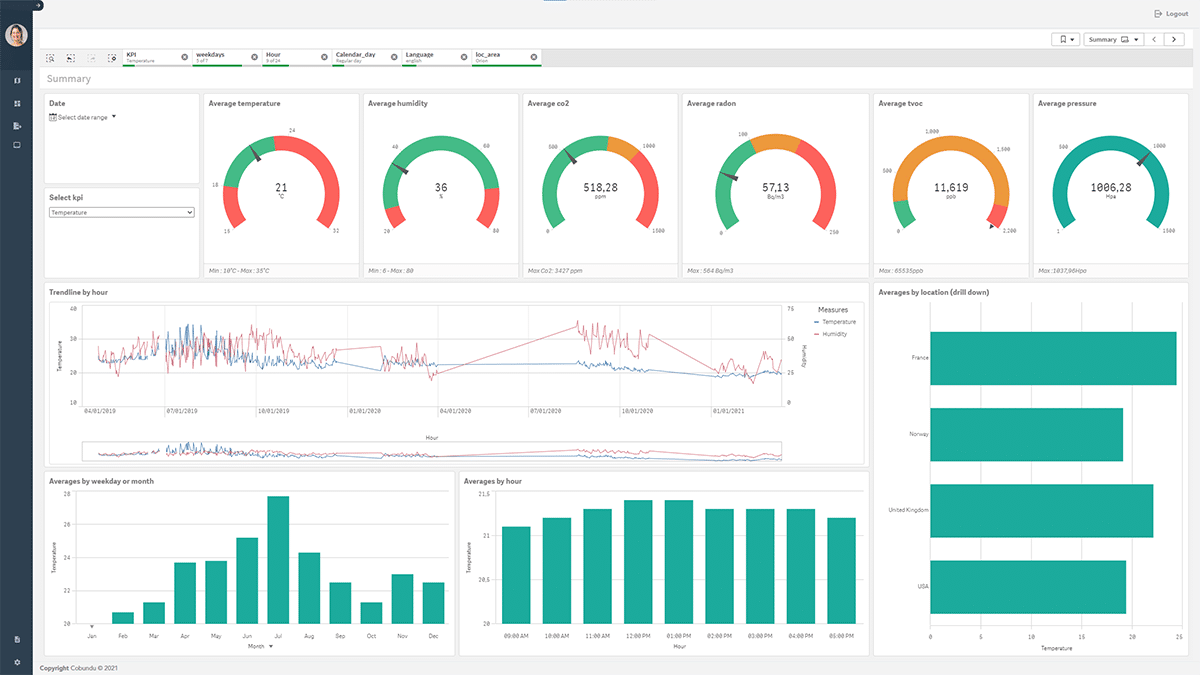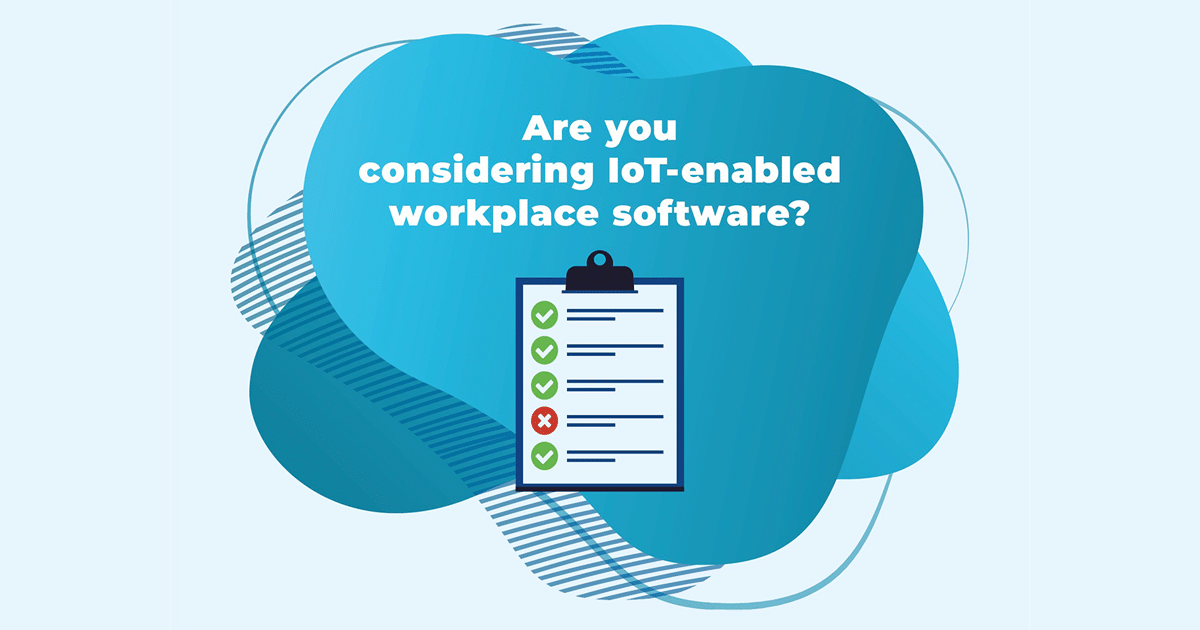Photo courtesy of HOLMRIS B8
In this post, we discuss indoor air quality and how it impacts people’s well-being and productivity at work. We’ll also look at how sensor data and analytics can help you gain insight into environmental factors. And how to improve indoor air quality by using insights derived from IoT sensor data.
Can buildings make you sick?
You have probably heard about ‘sick building syndrome’ before – it’s not fiction. Since the 1980s the World Health Organization has recognized sick building syndrome as a real disease. It is often caused by an improperly installed or poorly maintained ventilation system. But the syndrome can also be caused by dust, chemical components from the (building) materials present, moisture, and mold. Due to the unhealthy air in unhealthy buildings, people can develop symptoms such as:
- headaches
- nausea
- fatigue
- difficulty concentrating
- irritability
- throat irritation
- dry, itchy skin rashes
- allergy-like symptoms such as sneezing, a runny nose, and sore eyes.
Typically, these symptoms are relieved when employees leave work at the end of the day. Not only does unhealthy air negatively affects employees’ efficiency and productivity in the office, but it may also lead to increased absenteeism. At the same time, the risk of infections from airborne pathogens, such as the coronavirus, increases. In extreme cases, long-term exposure to poor indoor air quality may even lead to lung diseases, such as asthma, or to cancer.
Impact of poor air quality on productivity and cognition
Poor air quality is not only harmful to physical health, but there is also growing evidence for its impact on mental health, including depression, anxiety disorder, and burnout. Poorly circulated air in buildings also impairs our cognitive function – the ability to think clearly and creatively. In a series of double-blind experiments in the US, volunteers were tested on their ability to think analytically and react to a crisis. The results were eye-opening. When volunteers worked in well-ventilated conditions (which lowered the levels of CO2 and VOCs), they scored 61% higher than when they worked in typical office building conditions. The conclusion of the research: clean indoor air not only makes us healthier, but it also makes us smarter, which has implications for businesses, especially in knowledge-intensive industries.
Improving indoor air quality: good for business
Air quality is invisible, which is why building managers have tended to ignore it, focusing more on a comfortable temperature or on saving energy. The pandemic, however, has heightened people’s awareness of the indoor environment and brought a new focus on air quality. Considering that in industrialized countries we spend more than 90% of our lifetimes indoors, we now expect the buildings we use to make a positive contribution to our long-term health. Employees want to be confident that the air in their workspaces is clean when they return to the office. And employers are realizing that good indoor air quality is a business advantage. So how do we know if the indoor air is clean? Air quality sensor data allow to monitor — and if necessary improve air quality.
Monitoring and communicating indoor air quality
You cannot effectively solve what you cannot measure. A real-time monitoring system provides reliable data at a localized level. This will quickly alert you to air quality anomalies. And it will allow you to take a data-driven, proactive approach to improving indoor air quality.

Sensor data allow to monitor and if necessary improve air quality
These days small sensors in the workplace can monitor many aspects of environmental quality. From the presence of volatile organic compounds (VOCs) and radioactive radon gas to CO2 concentrations, temperature, humidity, air pressure, noise, and light. It is enabled by the Internet of Things:
- Low-cost, low-power wireless sensors capture raw data such as carbon dioxide or particle matter levels
- These measurements are ingested by an IoT platform that transforms them into accurate data
- Analytical dashboards visualize various metrics and overlay the data on floor plans to give it geographical context and enable users to spot trends across a given floor. The resulting insights will help you improve indoor air quality
- Information about air quality can also be communicated to building users through various touchpoints and user devices. For example, small LED lights that indicate CO2 levels in conference rooms. This increases transparency and shows that organizations care about employee well-being
Continuous monitoring by sensors that are independent of building HVAC systems can ensure that equipment is performing as intended. So that buildings remain healthy over time.
Air quality monitoring can also help identify and troubleshoot issues in specific (enclosed) areas. For example, if you’ve installed new furniture in a meeting room and sensors detect a spike in VOCs (some of which may have short- and long-term adverse health effects), this may be due to the outgassing of the new furniture. As a precaution, ventilation should be increased until levels return to normal.
Healthy building certification
Air quality sensors, and the data they capture, can also play an essential role in achieving healthy building certification. Two major certification systems that were established in the last decade are the WELL Building Standard and Fitwel.
RESET is a more recent, sensor-based standard. Due to the high variability of air quality and its tendency to quickly change, RESET sees continuous air quality monitoring as a necessity for indoor spaces.
Which IoT monitoring solution for the workplace?
With so much attention on indoor air quality requirements, businesses should consider implementing a reliable monitoring system, such as Spacewell’s Air Quality Monitor. This solution is part of a smart workplace IoT platform that captures and analyzes data about indoor air quality, comfort, and space usage. It not only allows to track and improve indoor air quality but also to optimize the office footprint and adjust the space mix for new ways of working. It is an open, people-centric smart building platform that uses and certifies only the best hardware available on the market, such as Airthings for business sensors for radon and air quality monitoring.
Interested to know more about Spacewell’s smart workplace technology? Please contact our experts.










